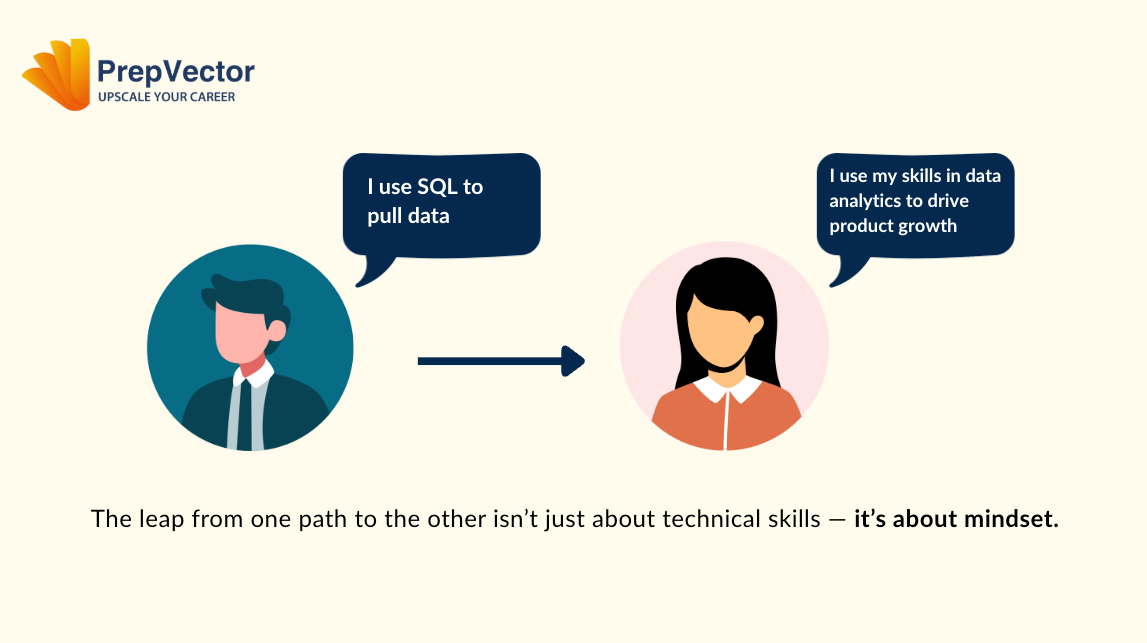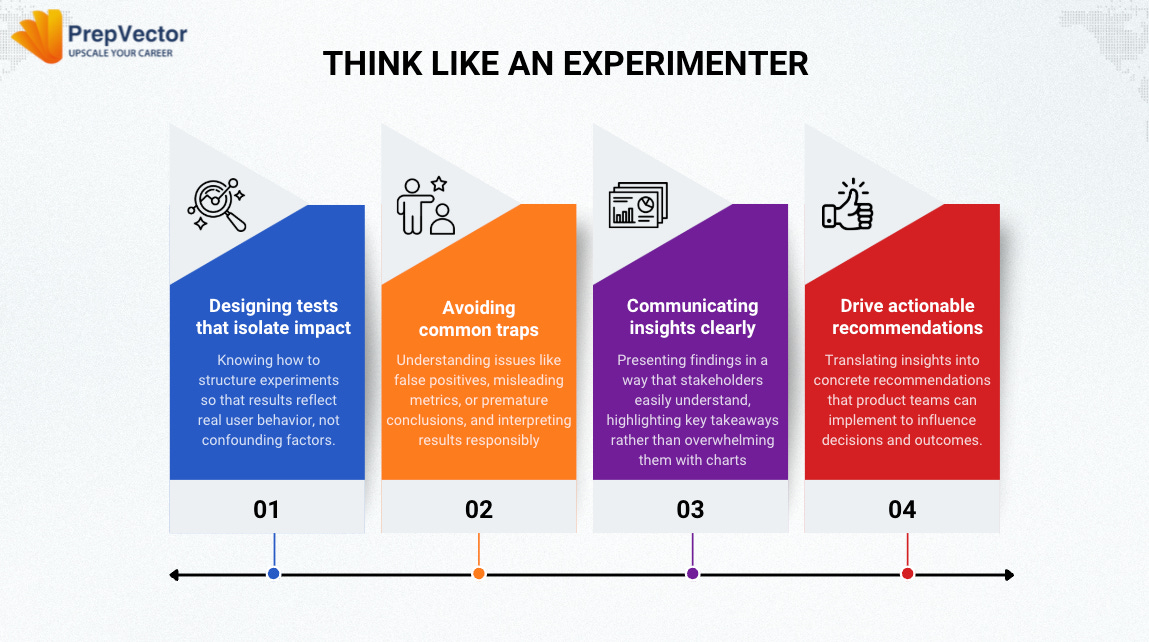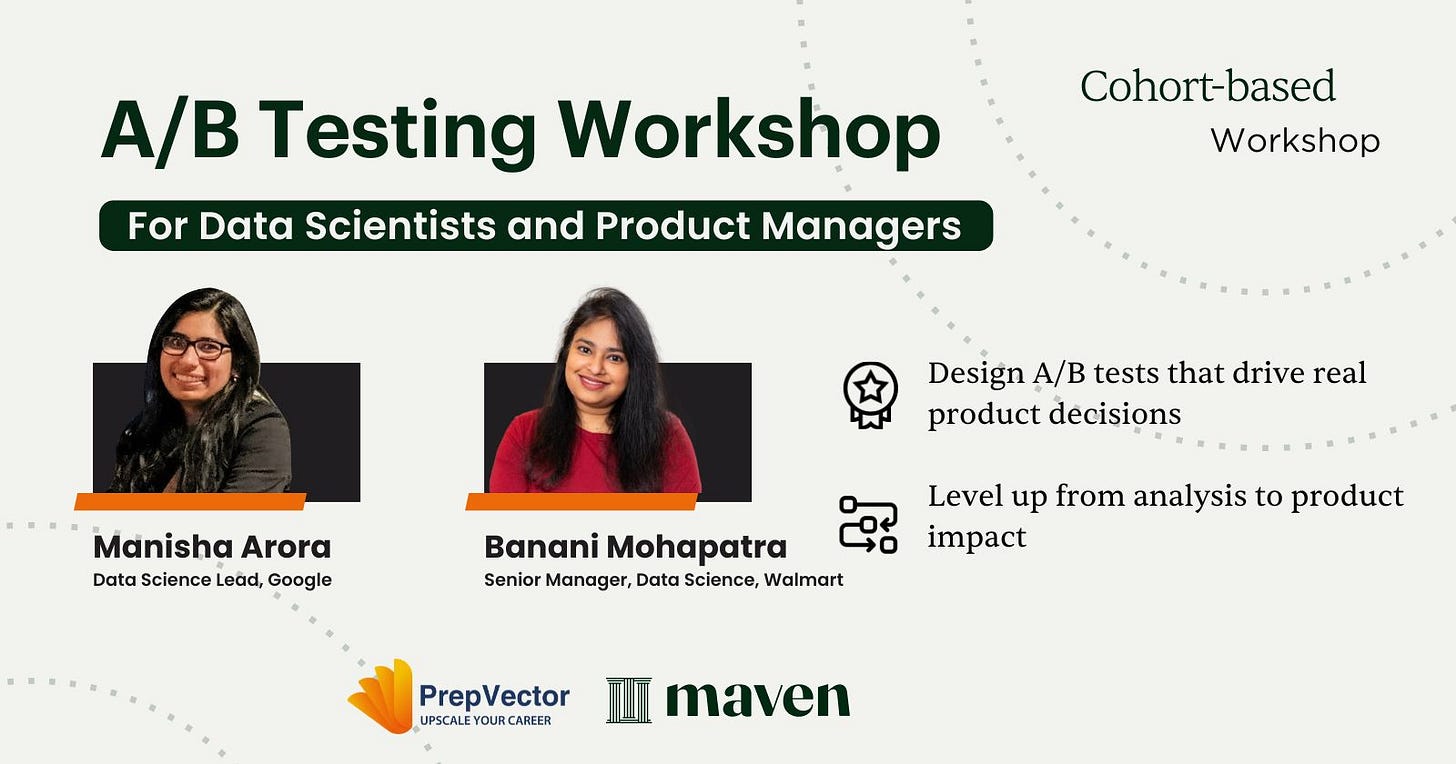Most data analysts start their careers in the same place: building dashboards and answering ad-hoc data questions:
How did sales trend last week?
Which campaign performed better?
What’s our churn rate this quarter?
These are important questions, and learning how to build clean dashboards and reports is a critical skill. You learn SQL, you get good at Tableau or Looker, and suddenly you’re the go-to person for “Can you pull me this metric?” or “Can you build a dashboard for this team?”
And for a while, it feels great. Your work is visible. People rely on you.
But eventually, you start noticing a pattern.
The questions shift.
Instead of “What happened last week?” stakeholders begin asking:
“Why did this metric drop?”
“Will this new feature improve signups?”
“Can we test it before rolling it out?”
The further you go in your career, the less it’s about reporting the past and the more it’s about shaping the future. That’s when you realize: dashboards aren’t enough anymore.
The Analyst’s Inflection Point
This moment is a career inflection point.
You can either:
Keep building dashboards, answering “what happened?”
Or step into a more strategic role, answering “what should we do next?”
The analysts who grow fastest are the ones who can translate numbers into recommendations.
The leap from one path to the other isn’t just about technical skills — it’s about mindset. It’s about shifting from passively reporting insights to actively shaping decisions. And that’s where experimentation comes in: it provides a framework to test ideas, validate assumptions, and turn data into actionable guidance.
Why Experimentation Matters
Here’s the difference:
Dashboards tell you what happened.
Experiments tell you what works.
Let’s consider an example. Imagine you’re working at Airbnb.
A dashboard shows that search bookings are down 5% compared to last week. That’s useful, it tells you there’s a problem, but it doesn’t answer the critical questions: Which part of the experience caused this? What changes could reverse the trend?
Now imagine you design a small experiment: you reorder the listings for a subset of users. The results show that this change increases conversions by 7%. Suddenly, you’re not just reporting a problem, you’re guiding the solution. One tells you what happened, the other shows what works. That’s the power of experimentation.
A dashboard shows: Search bookings are down 5%. An experiment reveals: Reordering the listings increases conversions by 7%.
See the difference? One is reporting. The other is impact.
This approach is why companies like Meta, Netflix, and Amazon invest heavily in dedicated experimentation teams. They don’t just track metrics. They design deliberate tests to understand user behavior and improve outcomes. A few examples:
Netflix: Testing autoplay and thumbnail variations to increase watch time.
Uber: Tweaking driver assignment logic to improve ETA accuracy and reduce cancellations.
Airbnb: Changing search discovery rankings to boost bookings.
Notice a pattern? These aren’t random tests. They are intentional experiments tied to business outcomes. Experiments provide a structured way to test hypotheses, learn from data, and make confident decisions rather than relying on intuition alone. It’s a decision-making framework. And it is led by people who know how to translate data into product choices.
For analysts, this is the big unlock: going beyond building dashboards to asking “what should we try next, and how will we know if it works?”
For analysts, this is a career-defining skill. Moving from dashboards to experiments allows you to ask:
“Which change could move the metric that matters?”
“How can I test this hypothesis before recommending a rollout?”
“What does the data truly tell us about impact?”
Mastering this mindset transforms your role from a reporter of numbers to a driver of decisions, giving your insights a direct line into product strategy.
What Changes for You as an Analyst
Mastering experimentation transforms your role in ways that go far beyond building dashboards or running queries. Suddenly, your work stops being just about reporting the past. It becomes about shaping the future.
When you master experimentation, a few things shift:
You’re no longer just presenting data. You’re influencing product direction.
You’re part of the conversation on what gets built instead of reacting after the fact.
You move from being seen as a “reporting function” to being recognized as a decision driver.
That’s the leap most analysts want to make in their careers. The analysts who grow fastest aren’t just the ones who can pull the cleanest queries or make the slickest visualizations. They’re the ones who can sit at the product table and influence decisions.
Learning to think like an experimenter gives you that seat. It means:
Designing tests that isolate impact: Knowing how to structure experiments so that results reflect real user behavior, not confounding factors.
Avoiding common traps: Understanding issues like false positives, misleading metrics, or premature conclusions, and interpreting results responsibly.
Communicating insights clearly: Presenting findings in a way that stakeholders easily understand, highlighting key takeaways rather than overwhelming them with charts.
Drive actionable recommendations: Translating insights into concrete recommendations that product teams can implement to influence decisions and outcomes.
It’s the bridge from being “the person who reports numbers” to becoming “the person who shapes the roadmap.”
In short, it’s the bridge from being “the person who reports numbers” to becoming the person who shapes the roadmap.
The Takeaway
Dashboards are essential; they help you understand the past and spot trends, but they only answer what happened. Experiments, on the other hand, answer what works. They give you a framework to test ideas, validate hypotheses, and make informed recommendations that actually influence the product.
For early-career analysts, mastering experimentation is one of the highest-leverage skills you can develop. It moves you from reporting numbers to driving impact, from being a reactive contributor to a proactive decision-maker.
Think of it this way: dashboards tell the story of yesterday. Experiments shape the story of tomorrow. By adopting this mindset, you don’t just grow your technical skills, you grow your influence, your career trajectory, and your ability to make a meaningful business impact.
A Special Discount for DataHustle Members
That’s exactly why Manisha and Banani are hosting a Live Weekend Workshop on A/B Testing, built for data professionals who want to make this leap.
In this session, you’ll learn how to:
✅ Design experiments that answer real business questions
✅ Avoid the most common pitfalls in A/B testing
✅ Move beyond metrics and into product decisions
You will learn from industry leaders Manisha Arora, Google, and Banani Mohapatra, Walmart, who will share their experiences and discuss industry case studies from Uber, Spotify, and more.
Best of luck for everything!
- Sai Bysani, a fellow Hustler!
Keep grinding, keep growing,
The Data Hustle.





